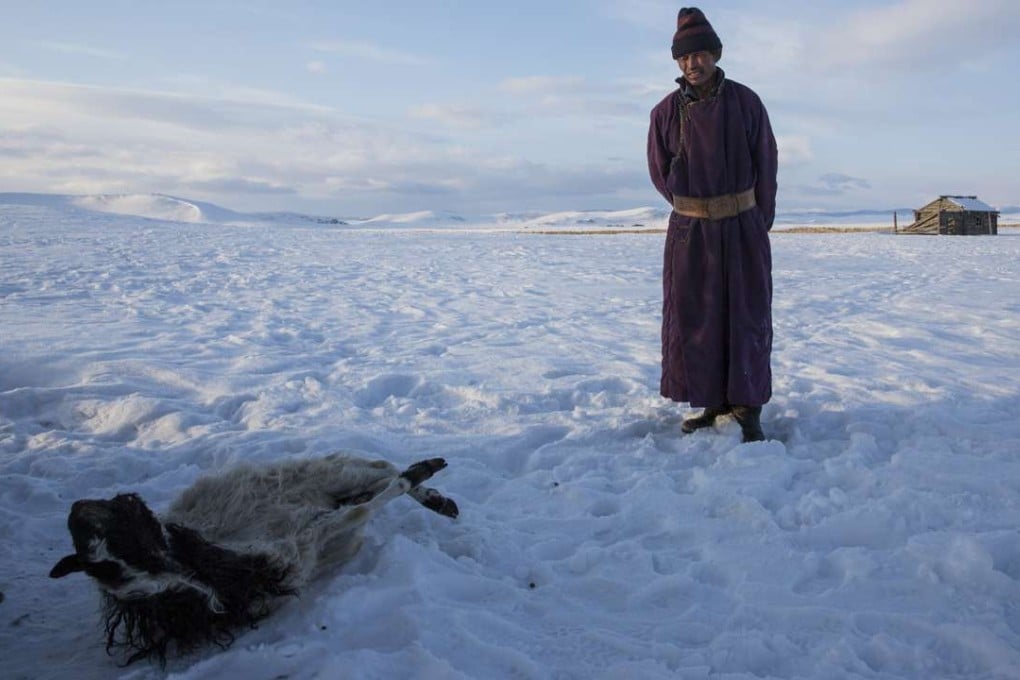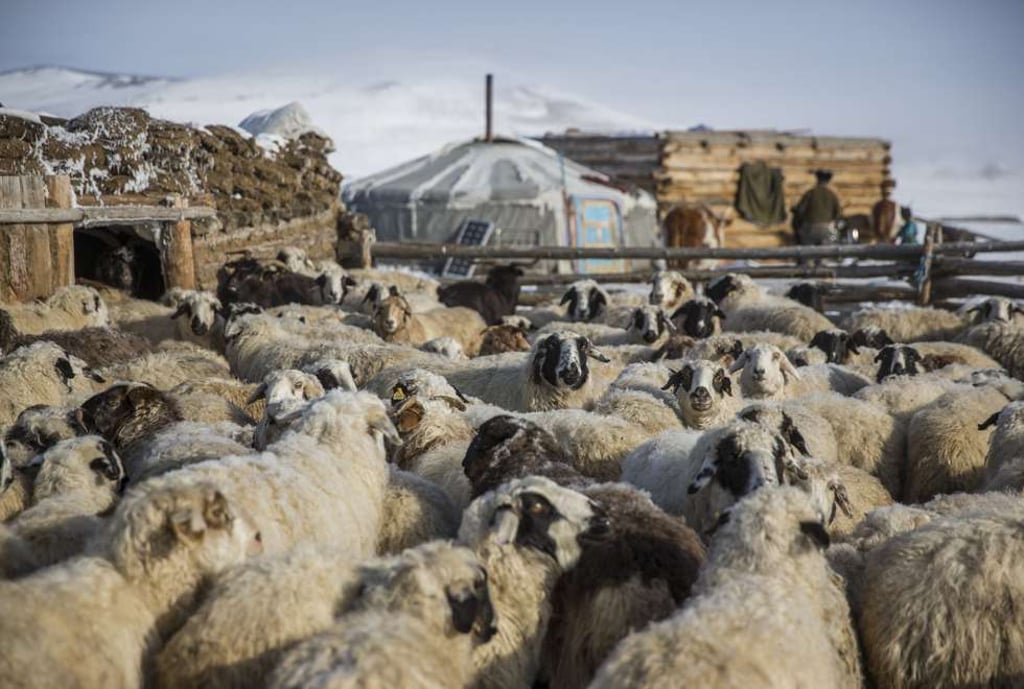Deadly winters, climate change spell doom for Mongolian herders
With pastures shrinking due to rising temperatures and overgrazing, consecutive years of an extreme winter phenomenon known as the dzud have decimated livestock and puts livelihoods at risk on the steppe

The sheep lies on the ice-hard ground, its hind legs bent at an unnatural angle. Glazed eyes look like marbles in a head cocked to the side.
“When they died, all their legs were bloodied,” says Batsuri Sharkhuu, pointing at the exposed flesh on the carcass’ front legs. “That means that when they used their hooves to chop at the snow, it hurt them. On all their front legs, the skin is gone.”
The 54-year-old herder is standing outside the wooden shed in which he is storing the carcasses of 20 of his animals. The sheep and goats, which Sharkhuu discovered dead one recent morning, represent just his latest loss – so far this winter, more than 100 of his 300 animals have perished, he says.
His face etched with weariness, Sharkhuu looks across the glittering snow that blankets the Darkhad Valley, in northwestern Mongolia. It is a beautiful sight, but the unending whiteness spells doom for his family. His ger (the traditional Mongolian tent) is just 10 minutes away by car, in Renchinlkhümbe district, and his wife is awaiting his return.
“Every day, my wife cries because all our animals are dying,” he says. “She has had to take care of the animals a lot – she was the one who raised them.”
Sharkhuu is among the more than 265,000 herders in the landlocked East Asian nation who have been hit hard by this winter’s dzud, a Mongolian word that describes horrifying weather conditions and the resulting death of livestock from starvation.
